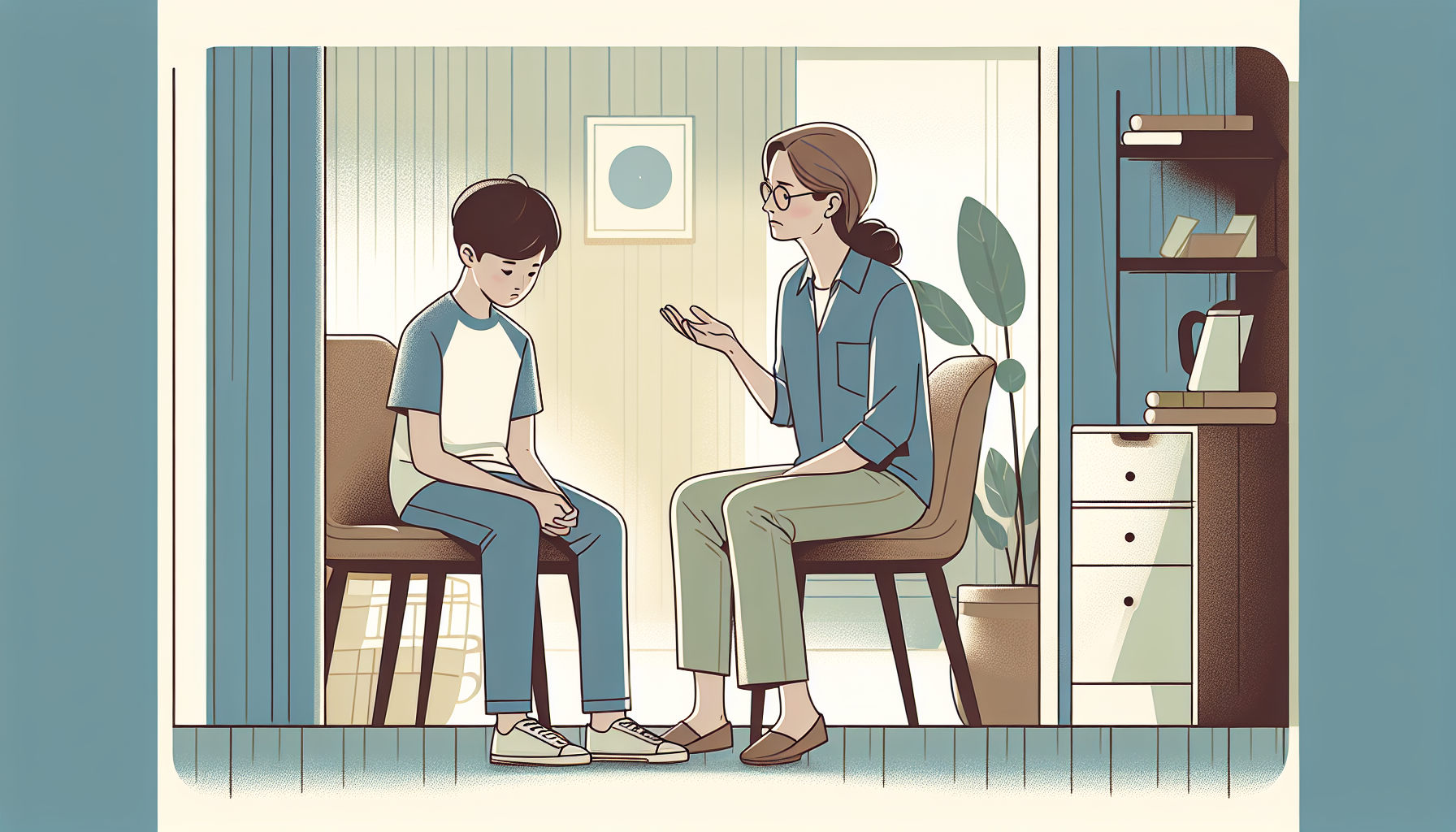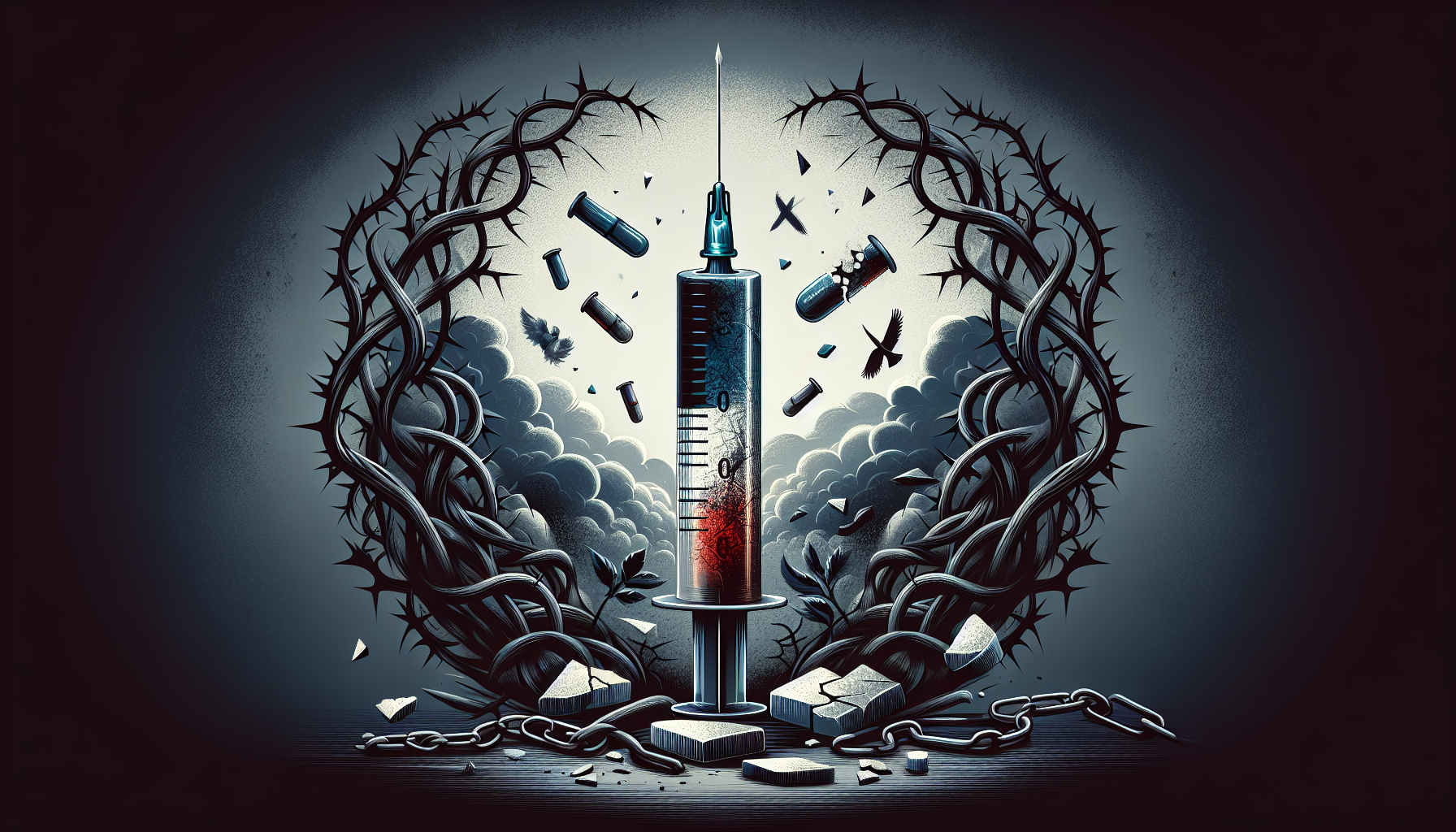August 25, 2024
Party Drugs Exposed: What You Need To Know
Uncover the truth about party drugs - What are they? What are the risks? Stay informed and make smart choices.

Understanding Party Drugs
When it comes to party environments, certain substances known as party drugs are frequently encountered. Party drugs, also referred to as recreational drugs, are substances often offered or used at parties, festivals, or concerts, despite their illegal nature. These drugs are associated with a perceived sense of fun and altered experiences. Understanding what party drugs are and the different types available is essential to comprehend the risks and potential dangers associated with their use.
What are Party Drugs?
Party drugs, or recreational drugs, are substances that individuals may consume in social settings to enhance their experiences. These drugs can alter perception, mood, and cognition, leading to a range of effects on the mind and body. It is important to note that the use of party drugs is generally illegal due to their potential for harm.
Types of Party Drugs
Party drugs can be categorized into three main groups based on their effects on the central nervous system: depressant drugs, stimulant drugs, and hallucinogen drugs.
Depressant drugs work by slowing down the central nervous system, resulting in relaxation, sedation, and reduced inhibitions. Examples of depressant party drugs include alcohol, benzodiazepines, and gamma-hydroxybutyrate (GHB).
Stimulant drugs, on the other hand, speed up the central nervous system, leading to increased energy, alertness, and euphoria. Common stimulant party drugs include cocaine, amphetamines, and methamphetamines.
Hallucinogen drugs, also known as psychedelics, alter an individual's perception of reality, often resulting in hallucinations, sensory distortions, and intense spiritual experiences. Drugs like LSD (lysergic acid diethylamide), psilocybin mushrooms, and MDMA (ecstasy or molly) fall into this category.
Understanding the different types of party drugs is crucial for individuals to make informed decisions about their use and to be aware of the potential risks involved. It is important to note that the use of party drugs can have short-term effects, long-term impacts, and legal consequences, which will be explored in the subsequent sections.
By educating oneself about party drugs, their effects, and potential risks, individuals can make more informed decisions and prioritize their health and well-being. It is essential to remember that the use of party drugs can have serious consequences and seeking professional help is always recommended for those struggling with substance misuse.
Risks and Dangers
When it comes to party drugs, it's important to be aware of the risks and potential dangers they pose. These risks can have both short-term effects and long-term impacts on individuals. Additionally, the use of party drugs can also have legal consequences.
Short-Term Effects
Party drugs, also known as club drugs, are often taken to enhance the enjoyment of social gatherings. However, these drugs can affect individuals differently based on factors such as the type of drug and the person's health. The short-term effects of party drugs can include:
- Increased energy and euphoria
- Enhanced mood and sociability
- Impaired judgment and decision-making
- Distorted perception of time and surroundings
- Increased heart rate and blood pressure
These short-term effects can vary depending on the specific drug used, and combining them with alcohol or other substances can further intensify the risks associated with their use.
Long-Term Impacts
In the long term, party drugs can have various effects on individuals, impacting their physical and mental health. Some party drugs are highly addictive and can be challenging to stop using. The long-term impacts of party drug use may include:
- Damage to vital organs such as the brain, heart, liver, and kidneys
- Cognitive impairments and memory problems
- Mental health disorders such as depression, anxiety, and psychosis
- Increased risk of developing substance use disorders or addiction
It's important to note that the long-term effects can vary depending on the specific drug used and individual factors such as the frequency and duration of use.
Legal Consequences
Taking illegal party drugs can have legal consequences, putting individuals at risk of getting into trouble with the law. The possession, distribution, or use of these drugs is against the law in many jurisdictions. Legal consequences may include:
- Arrest and criminal charges
- Fines and legal fees
- Probation or parole
- Incarceration or community service
- Criminal record, which can impact employment and other aspects of life
It's important to understand that the legal consequences of drug use can vary depending on local laws and regulations.
Being informed about the risks, dangers, and legal consequences associated with party drug use is essential for making informed decisions. If you or someone you know is struggling with drug use or addiction, seeking help from healthcare professionals, support groups, or helplines can provide guidance and support. Remember, there are resources available to assist individuals in overcoming addiction and promoting overall well-being.
Club Drugs Overview
Club drugs, also known as party drugs or designer drugs, are chemical substances designed to affect a person's behavior, awareness of surroundings, and mood. These drugs are primarily used by young adults or adolescents at raves, house parties, clubs, and bars. They are often sought after for their ability to enhance social experiences and create a sense of euphoria. However, it's important to note that club drugs come with dangerous side effects and risks.
Characteristics of Club Drugs
Club drugs can have varied short-term effects on the body, but they generally share common characteristics. Signs that one may have ingested a club drug include increased energy, enhanced mood, impaired judgment, and distorted perception. Some club drugs, such as Rohypnol, GHB (gamma hydroxybutyrate), and Ketamine, are also used as date rape drugs, making them particularly concerning.
These drugs are often produced in makeshift labs, making it difficult to know their exact chemical composition. The potency of club drugs can vary with each use, and high doses may result in severe consequences such as difficulty breathing, coma, or even death. Combining club drugs with alcohol can be particularly dangerous. It's crucial to be aware of these risks and exercise caution when attending social events where these substances may be present.
Common Club Drugs
There are several common club drugs that individuals may encounter in party or nightlife settings. Here are a few examples:
Club DrugCommon NamesMDMAEcstasy, MollyKetamineSpecial K, KGHBLiquid Ecstasy, Grievous Bodily HarmLSDAcidRohypnolRoofies, Forget-me-pill
It's essential to note that the use of these drugs is illegal in most jurisdictions, and their consumption can have severe consequences for both physical and mental health. Understanding the dangers associated with these substances is vital to ensuring personal safety and making informed decisions.
Risks of Club Drug Use
Engaging in club drug use carries various risks and potential adverse effects. These risks can include:
- Overdose: The potency and composition of club drugs can vary, making it challenging to gauge the appropriate dosage. Taking too much of a club drug can lead to an overdose, which can have serious or even fatal consequences.
- Impaired judgment: Club drugs can impair judgment and decision-making abilities, potentially leading to risky behaviors, dangerous situations, or harm to oneself or others.
- Addiction: Regular use of club drugs can lead to physical and psychological dependence, making it difficult to quit or reduce usage.
- Mental health effects: Club drugs can have negative impacts on mental health, including anxiety, depression, and cognitive impairments.
- Legal consequences: Possessing, using, or distributing club drugs is illegal in most jurisdictions, and individuals caught with these substances may face legal repercussions.
Understanding the characteristics, common types, and risks associated with club drugs is crucial for individuals to make informed decisions about their well-being and safety. It's important to prioritize personal health and seek support if struggling with substance abuse or addiction.
Addiction and Misuse
When it comes to party drugs, understanding addiction and misuse is crucial. Drug misuse refers to the deliberate decision to use alcohol, illegal drugs, or medications in an unsafe manner. This behavior can lead to addiction, which interferes with an individual's insight into knowing how or when to stop [5].
Understanding Drug Misuse
Drug misuse involves using substances in ways that are not intended or prescribed. It may include taking higher doses than recommended, using drugs for non-medical purposes, or combining different substances to enhance their effects. This behavior puts individuals at a higher risk of developing an addiction and experiencing negative consequences.
People who misuse drugs often seek the euphoric or pleasurable effects they provide. However, drug misuse can quickly spiral out of control, leading to significant physical, mental, and social harm. It's important to recognize the signs of drug misuse and seek help if needed.
Physical and Psychological Addiction
Addiction can manifest as physical, psychological, or both. Physical addiction occurs when a person's body becomes dependent on a drug, leading to tolerance and withdrawal symptoms. This means that the body needs more of the substance to achieve the desired effect and experiences unpleasant symptoms when the drug is not consumed.
Psychological addiction, on the other hand, is characterized by the intense craving for the pleasurable feeling that the drug provides. Individuals may experience emotional distress and a strong desire to use the drug to alleviate negative emotions or situations. Psychological addiction can lead to a preoccupation with obtaining and using the drug, even at the expense of personal relationships, work, or other important aspects of life.
Both physical and psychological addictions can have severe consequences on an individual's overall well-being. Addiction is classified as a brain disorder, similar in severity to conditions like heart disease, diabetes, or emphysema. It can result in periods of relapse and recovery, affecting both behavior and social interactions.
Recognizing the signs of addiction and seeking professional help is essential. Symptoms of psychological addiction may include seeing drugs as a solution, taking drugs in larger amounts or over longer periods, preoccupation with obtaining drugs, engaging in dangerous behaviors, and withdrawal from social contacts and activities. Symptoms of physical addiction can manifest as sleeping problems, increased drug tolerance, weight changes, and physical withdrawal symptoms when the drug is not consumed.
If you or someone you know is struggling with addiction, it's important to reach out to healthcare professionals, support groups, or addiction helplines for guidance and assistance. Remember, addiction is a treatable condition, and with the right support, recovery is possible.
Impact on Mental Health
Party drugs can have a significant impact on mental health. The substances used in these drugs can alter the chemical balances in the brain, leading to changes in thoughts, behaviors, and emotions. Understanding the effects on mental health is crucial for individuals considering or struggling with party drug use.
Effects on Brain Chemistry
Party drugs like MDMA (ecstasy or molly) and LSD have a direct impact on chemical balances in the brain, particularly the pathways involving serotonin. MDMA increases the activity of serotonin, dopamine, and norepinephrine, leading to changes in perceptions. However, it also depletes the brain of important chemicals, causing long-term consequences.
Short-Term Mental Health Effects
The use of club drugs like molly and LSD can have negative side effects on mental health shortly after individuals abuse the substances. These effects may include confusion, sleep problems, anxiety, and paranoia. The alteration of brain chemistry and neurotransmitter function can contribute to these short-term mental health consequences.
Long-Term Mental Health Consequences
The long-term abuse of party drugs can lead to lasting mental health effects. Prolonged substance abuse can alter the structure and function of the brain, resulting in long-term consequences such as memory issues, mood swings, and hallucinations. These changes can significantly impact an individual's overall mental well-being [6].
It's important to note that party drugs can have a negative impact on both mental and physical health. The risk of developing severe mental health disorders and physical health concerns increases with the use of these substances. It is crucial to seek help and support if you or someone you know is struggling with party drug abuse, as the consequences can be severe and even life-threatening [6].
Understanding the impact of party drugs on mental health is essential for making informed decisions and seeking appropriate help and treatment. If you or someone you know is struggling with party drug use, reaching out to a healthcare professional or a substance abuse counselor can provide the necessary support and guidance to overcome addiction and improve mental well-being.
Party Drugs and Young Adults
When it comes to party drugs, young adults are a demographic that often engages in their use. Understanding the social dynamics and trends surrounding party drug use among young adults is crucial for addressing the associated risks and promoting healthier choices.
Social Use of Party Drugs
Young adults often turn to party drugs to enhance their social experiences and intensify their emotions and sensations. These substances can create changes in the brain and body, leading to altered perceptions of reality and heightened feelings [4]. Many individuals believe that party drugs can enhance their enjoyment of music, dancing, and social interactions.
Trends in Party Drug Use
According to a recent study conducted by the Monitoring the Future (MTF) program, the use of party drugs among young adults, including college students and those not enrolled in college, has reached record levels. Marijuana and hallucinogen use, in particular, have seen significant increases. Nearly half of young adults reported using marijuana, which represents a notable increase from previous years. Additionally, hallucinogen use has reached its highest level since 1982.
The study also found that daily or near-daily use of marijuana has increased among young adults. Eight percent of college students and thirteen percent of young adults not attending college reported using marijuana on a daily or near-daily basis. These statistics highlight the need for education and intervention strategies to address the potential consequences of frequent drug use.
Influence of Global Factors
Global factors, such as the COVID-19 pandemic, have had an impact on party drug use among young adults. The Global Drug Survey conducted on 40,000 individuals worldwide revealed an increase in the use of alcohol and benzodiazepines like Xanax and Valium. The anxiety created by the pandemic may be contributing to more young people turning to substances as a way to alleviate worry and reduce inhibitions.
It is essential to recognize these global trends and their potential implications for young adults' mental health and well-being. Providing support, resources, and access to holistic approaches for managing stress and anxiety can help address the underlying factors that contribute to party drug use.
Understanding the social use, trends, and global influences of party drugs among young adults is crucial for developing effective prevention and intervention strategies. By promoting awareness, education, and support, we can empower young adults to make informed choices and prioritize their well-being in social settings.
References
[1]: https://www.healthdirect.gov.au/party-drugs
[2]: https://www.gatewayfoundation.org/addiction-blog/club-drugs/
[3]: https://www.samhsa.gov/find-help/national-helpline
[4]: https://www.newportinstitute.com/resources/co-occurring-disorders/party-drugs/
[5]: https://www.urmc.rochester.edu/encyclopedia/content.aspx?contenttypeid=1&contentid=2255

.jpg)




.jpg)

